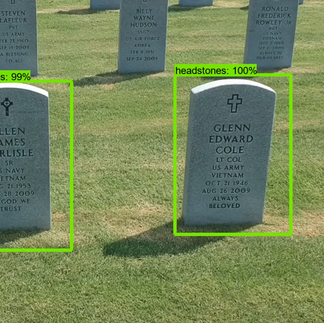- Debayan Mandal
In an era where the past often seems overshadowed by the rush of the present, it's crucial to remember and honor those who have shaped history. The Symposium on Conflict Archaeology and Military History at Texas A&M University serves as a reminder of this. This event not only commemorates the past but actively engages in rediscovering it, particularly focusing on the valiant service members of the United States whose stories have yet to be fully told.

The symposium was a melting pot of minds and methodologies, highlighting the multidisciplinary nature of modern archaeological and historical research. Alongside mainstream projects in these two fields, it also showcased projects aimed at terrestrial and underwater technology for the identification of missing military personnel from past conflicts as well as preserving their memories in a novel manner, an endeavor as noble as it is challenging. My presentation, "Veterans Legacy Geographic Information System: Citizen Science Approach to Extended Memorialization Digitally," co-authored with Dr. Lei Zou, Dr. Stacey Lyle, Dr. Stephine Paal, Dr. Lorien L. Foote and multiple other graduate students, was a part of Panel #3: Terrestrial Technology. At the time of its conception, this project took a multidisciplinary approach and was contributed to by Geography, Engineering, and History Department students and professors alike. It also benefited from the involvement of a high number of Cadet Corps and Student Veterans from the University. To name a few of the students involved, they included Alex Ramirez, Lauren Smart, Kathleen Jurecka, Lydia Prislovski, Gracie Davis, Yanmo Weng, Johan Dube.

Veterans Legacy GIS: Bridging the Past and the Present
Our project, the Veterans Legacy GIS, stands at the intersection of technology and remembrance. Utilizing advanced tools like AI Drone Mapping and Augmented Reality, we had aimed to create a digital memorial landscape. This project not only aids in the extended memorialization of service members but also allows the public, especially relatives and researchers, to access and contribute to the rich history of these heroes. This citizen science approach extends memorialization beyond the physical, enabling a digital homage to the resting places of veterans and a deeper understanding of their lives and sacrifices.
At the symposium, the three objectives of the project were presented, intertwining humanitarian goals with advanced technology. The AI Drone Mapping Learning System marked a significant advancement in digital archaeology, leveraging artificial intelligence for enhanced headstone mapping. Complementing this was the Field Data Collection Web-Application Tool, a user-friendly platform designed to streamline the gathering and analysis of veteran headstone data. Additionally, the Veteran’s Legacy GIS Micro-Certificate program was introduced, offering specialized GIS training focused on data collection for these cemeteries, thus contributing to the preservation and honor of veterans’ legacies. These initiatives collectively symbolize the synergy of technological innovation and educational advancement in the field of historical preservation.
The symposium was graced by diverse presentations, each adding depth to our understanding of conflict archaeology and history. Dr. Stacey Lyle, a driving force behind our project, also presented How I have captured my 'American Experience' of Exploring and Surveying with Media. Other presentations of that session covered advancements in near-infrared spectroscopy for archaeological research and innovative approaches to unmarked grave detection, showcasing the broad spectrum of research being conducted at Texas A&M University.

The Symposium on Conflict Archaeology and Military History at Texas A&M was more than an academic gathering. On the occasion of Veteran's Day; it was a testament to this nation's commitment to never forget those who served. Through the blend of archaeology, history, and technology, we continue to explore and preserve the legacies of these heroes, ensuring that their sacrifices are remembered and honored. As we delve into the past, we bring to light stories that reaffirm the promise to the fallen and their families: a promise of remembrance and gratitude.















